Blepharoplasty of the eyelids is an aesthetic plastic surgery operation, as a result of which you can change the shape of the eyes, the shape of the eyelid, and tighten the skin around the eyes.
What is blepharoplasty and how does it work?
Eyelid correction can be done in this way at any age. Young women change the shape of their eyes or remove drooping eyelids, while older women improve their appearance with a lift.
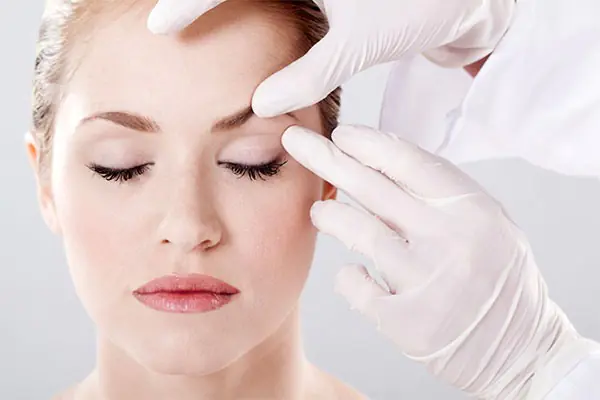
Blepharoplasty of the eyelids is considered a complex operation, as it is performed close to the organs of vision.
Due to the great danger of operating near the organs of vision, the operation is complex and requires careful preparation.
First, the patient must make sure there are no contraindications.. A special group of patients includes people with congenital pathologies and those who have suffered serious facial injuries.
Before the surgical procedure, the patient must undergo the following tests:
- general blood test, urine test;
- blood test for hepatitis, HIV, syphilis;
- blood test for biochemistry;
- fluorography;
- heart electrocardiogram;
- coagulogram.
After taking tests and undergoing examinations, a preparatory period begins, which has the following prohibitions:
- It is forbidden to eat and drink 8 hours before surgery;
- It is prohibited to smoke and take medications that affect the patient’s blood clotting 2 days before surgery;
- The operation is not performed during a woman’s critical days.
Cost of the operation
The cost of eyelid blepharoplasty directly depends on the qualifications of the surgeon, the clinic, and the methods that will be used during the operation.
The price is also significantly affected by the quantity and quality of anesthesia., the number of days that will need to be spent in an inpatient clinic setting.
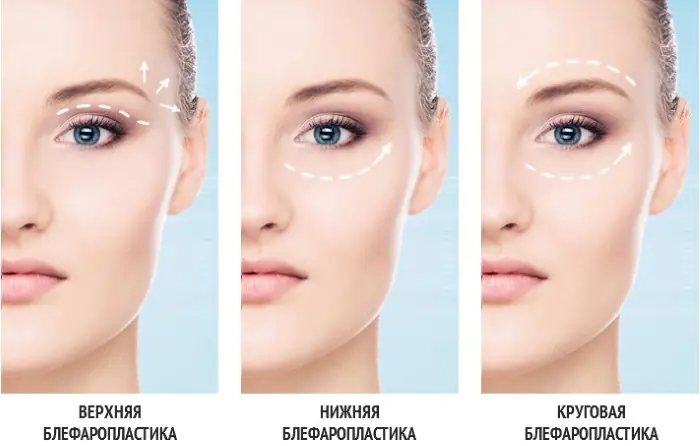
Average cost of eyelid blepharoplasty:
- surgery on the upper eyelids from 45,000 rubles;
- on the lower eyelids from 55,000 rubles;
- laser surgery from 62,000 rubles;
- circular operation from 85,000 rubles;
- eastern eyelids from 65,000 rubles.
Reviews from women who have undergone the procedure are mostly positive. All patients are satisfied with their appearance and the shape of their eyes after the rehabilitation period. They look younger, fresher and with beautiful eyes.
Upper eyelid blepharoplasty
The operation is performed mainly under local anesthesia, and no pain or discomfort is felt. If the amount of work is large (correction of a moving and fixed eyelid, eyebrow lifting), then general anesthesia is used. The patient is in a reclining position.
During the procedure, you can change the aesthetic appearance of the eyes, remove birth defects, and tighten the skin and muscles.
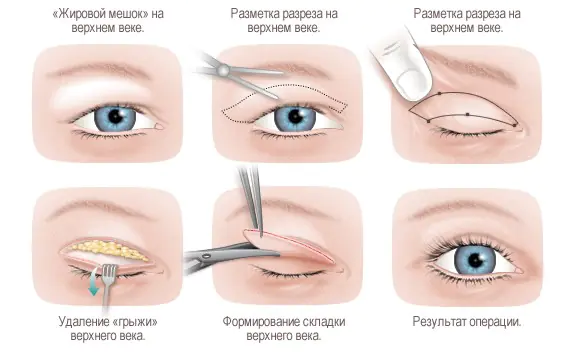
Indications for the operation:
- decreased tone of the upper eyelids;
- hernia;
- excess fatty tissue under the skin of the eyelids;
- wrinkles;
- loose skin;
- severely drooping corners of the eyes;
- ptosis of the eyelids.
The procedure lasts from 40 minutes to 2 hours, depending on the complexity and number of defects that need to be removed.
After the operation, someone close to the patient must be present to help, accompany, and purchase the necessary medications.
Lower eyelid blepharoplasty
Such surgery can remove bags under the eyes, copes with age-related changes and individual characteristics of genetic defects.
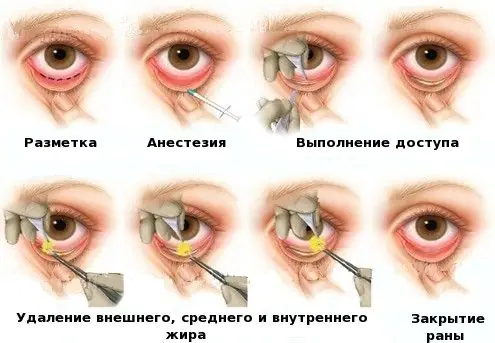
After lower eyelid blepharoplasty, the patient looks younger and his face becomes more attractive. In many cases, re-operation may not be necessary until 5-7 years later.
Indications for lower eyelid surgery:
- the presence of bags, dark circles under the eyes;
- severe swelling of the lower eyelids;
- congenital or acquired asymmetry of the eyelids;
- drooping corners of the eyes;
- large deposits of subcutaneous fat, the presence of fatty hernias;
- deep wrinkles, folds;
- sagging lower eyelid.
Asian eyelid surgery
This type of plastic surgery is aimed at changing the Asian shape of the eyelids to a shape typical for a European person.
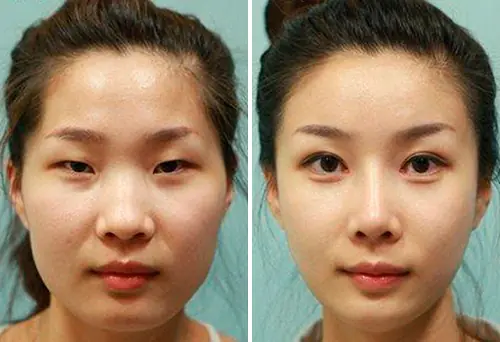
Basic principles that are characteristic of Asian eyes:
- weak expression or complete absence of a double fold on the upper eyelid;
- a pronounced fat fold on the eyelids;
- the presence of epicanthus - a fold that is located in the inner corner of the eye and continues the upper eyelid. It closes the tear duct.
The specialist is faced with the task of forming a double fold, removing the epicanthus and, if necessary, removing the orbicularis oculi muscle. Having completed all these points, it will be possible to achieve a Caucasoid eye shape.
Seamless, no-incision eyelid blepharoplasty
In some cases, surgery is not always necessary to change the shape of the eyes. Sometimes non-surgical blepharoplasty is the best solution. Non-surgical methods of eyelid surgery include the following types.
Laser method
During the laser method of eyelid shape correction, the laser acts on the skin using heat. The laser beam penetrates the skin to different depths, changing it as necessary.
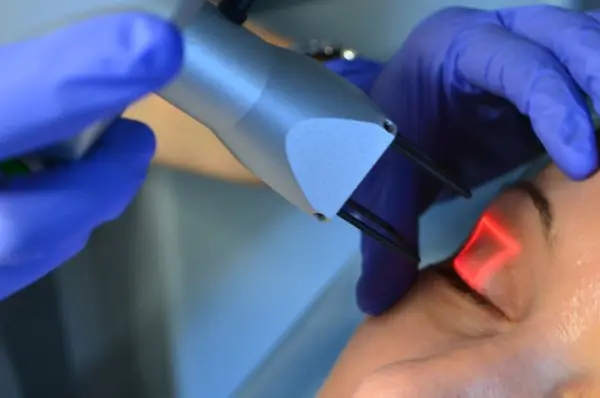
There are 2 methods of laser eyelid blepharoplasty, which differ in the type of radiation and penetration depth (carbon dioxide laser and erbium laser).
Injection procedure
These are the so-called “injections of youth”. The specialist gives injections around the eyes, which contain vitamins, hyaluronic acid, amino acids, phytoestrogens and other components.
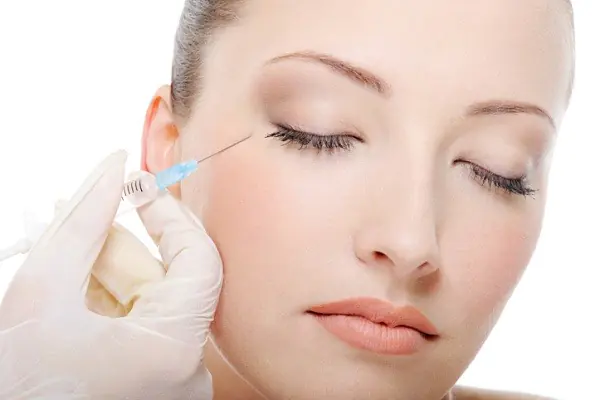
With age, they cease to be produced in the required quantities. With their help, you can smooth out wrinkles, improve the contour of the eyelids, eliminate puffiness and excessive volume of the eyelids.
Blepharoplasty with canthopexy
Eyelid blepharoplasty with canthopexy surgery involves lifting the outer corners of the eyes. Muscles and tendons, which weaken during the aging process, arbitrarily lose the edges of the eye, no longer able to hold them well and reliably.
During this operation, the surgeon removes some part of the canthus, which is overstretched.
The ideal eye shape is almond-shaped. This is when its inner edge is below the level of the outer edge. This is the main task of canthopexy.

Indications for canthopexy:
- the outer corners are significantly lower than the inner ones, due to injury, age or other reason;
- in this way you can remove fat bags under the patient’s eyes;
- correction of the eye shape for aesthetic reasons;
- skin condition after burns or other injuries;
- poorly performed plastic surgery in the past tense;
- this way you can significantly raise the lower eyelid, which is very sagging;
- weakening of the canthus after injury;
- with bulging eyes, if a person suffers from myopia;
- in order to correct facial asymmetry;
- eversion of the mucous membrane of the eye outward. It is possible to restore the normal appearance of the face and remove weakened muscles that have lost their functionality.
Transconjunctival blepharoplasty - complications and consequences
An operation to change the shape of the eyes may not be entirely successful.

The main features are:
- the patient's face has changed almost beyond recognition;
- the shape and shape of the eyes almost completely changes;
- the look is given a sad look.
These signs are very difficult to change, and sometimes even impossible.
Signs that a patient feels after an unsuccessful operation:
- short upper eyelids, because of this it is impossible to completely close the eyes;
- scars appear that are located high on the upper eyelid and low on the lower eyelid;
- too dry or wet eye, constant tearing;
- short lower eyelid;
- scars on the inner corner of the top row;
- the eye becomes too round;
- hernias appear on both eyelids;
- an eversion of the eyelid appears.
Errors arise due to the inexperience of the surgeon and his poor qualifications. After the operation, a long period of rehabilitation is required. And if mistakes were made during the operation, or the patient did not adhere to the recommendations of the rehabilitation period, complications and negative effects are possible.
Seals
These formations are dense to the touch. They go away if you complete a course of physiotherapy on time. It is important that the seals do not have time to harden.
Ectropion of the century
This is a kind of retraction of the lower eyelid, due to which the mucous membrane is noticeable. Treated with repeat surgery.
This is a normal occurrence after blepharoplasty. Over time they go away on their own.
Scarring
If the operation is performed correctly, this side effect should not occur.
Numbness of the eyelids
The sensitivity of the eyelid is impaired and the nerve endings are damaged. This may go away on its own after some time, and may require additional treatment.
Eversion of the century
Incorrect, too large or wide incisions during surgery lead to this consequence.
Drooping eyelid or blepharotoptosis
Most often it happens in elderly patients, sometimes the situation can be corrected with the help of massage. In some cases, another surgical intervention is necessary.
Different eyelids
Asymmetry. Incorrectly placed sutures and the formation of keloid scars lead to different shapes of the eyelids.
Scars
The surgeon's inexperience and poor suture threads can leave scars.
Rehabilitation period. How long does it take for eyelids to heal?
A patient who has undergone surgery must be kept in the hospital for several days. The doctor needs to monitor his condition. Since only the upper layers of the skin are cut, no special rehabilitation measures are taken. But, still, some rules must be followed.
In the first 2-3 days, according to the doctor’s advice and recommendations, the patient should apply cold to the eyes.
This way you can remove bruises much faster and get rid of swelling.
Recommendations during the rehabilitation period:
- The patient should sleep on a high pillow, reclining;
- do not tilt your head down;
- absolutely not to wear lenses for 14 days;
- You can wash your hair 2-3 days after the operation, the seams should be protected from water as much as possible;
- you can’t take a bath;
- You can’t read, work at the computer, you need to stop watching TV;
- follow the principles of proper nutrition, exclude salty foods;
- already on the second day you should do special exercises that the surgeon will recommend.
Rehabilitation is a difficult period of skin restoration in the delicate eye area. In the first 2-3 days after surgery, you should not remove the patch, which prevents infection from entering the wound; it also promotes wound healing. This sterile patch is necessary to disinfect wounds.
During this period, the stitches heal, swelling and bruising are removed. The patient should stop smoking and drinking alcohol in any dose..
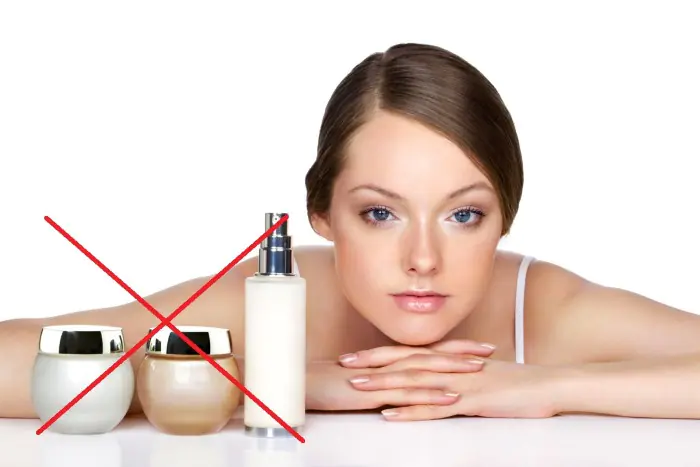
Bruises disappear within 7-10 days, the entire rehabilitation period averages 30-40 days.
Rehabilitation and recovery occur differently for each patient.
This is due to the following factors:
- patient's skin type;
- skin condition during the operation;
- age;
- physiological features of the structure of tissues around the eye.
Eyelid resurfacing
The skin around the eyes is very thin, much thinner than on all other parts of the human body. Eyelid resurfacing is done with a laser. The skin is exposed to a light beam.
The effect on the skin is divided into two types, and it depends on which laser was used:
- ablative – a rather harsh method of grinding eyelids. Experts use it on thick skin, its rays penetrate deeply and have a quick and effective effect;
- non-ablative. This is a gentle method of resurfacing the eyelids. It is used on thin and dry skin, which is characterized by increased sensitivity.
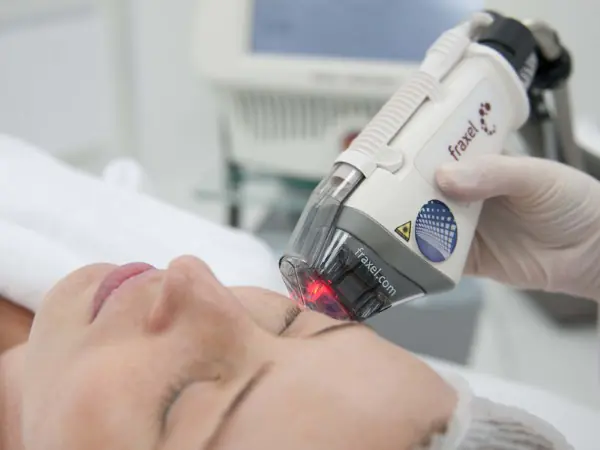
The laser, which penetrates deep into the skin, provides some stimulation to dead skin tissues, and they begin to recover, produce collagen and other elements necessary to restore the elasticity, color, and youth of the skin.
The procedure requires careful preparation, collection of tests and examination of the patient.
Eyelid resurfacing is performed on an outpatient basis and after a few hours the patient goes home. Of course, local anesthesia is used, in order to relieve pain.
The big advantage of the procedure is that the skin is not cut, it is kept intact. The downside is that laser resurfacing does not help in all cases.
Eyelid massage
Lymphatic drainage massage is one of the best ways to get rid of hematomas, bruises, and swelling after such a procedure. Massage improves blood circulation 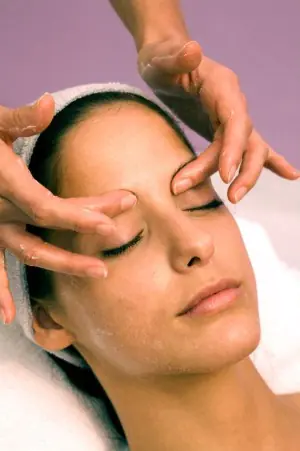
damaged tissues, which activates cell regeneration and accelerates the healing process.
If the operation was successful and the patient feels normal, then a massage course is prescribed on the second day. Typically, such services are provided by the clinic where the plastic surgery was performed.
There are also individual massage therapists who perform this kind of massage, but here you need to choose a specialist very carefully.
Massages are also indicated for those who have drooping eyelids after blepharoplasty.
Lymphatic drainage massage is effectively and widely used during the recovery period after blepharoplasty, but you must not make a mistake in choosing a specialist.
What to smear on eyelids
After blepharoplasty, care for the skin of the eyelids and sutures is necessary. In the first days of the rehabilitation period, this should be done by medical workers, and in the future the patient needs to cope with it independently.
After removing the bandage, the incisions should be smeared with a medicated ointment with an antibiotic.. It will help relieve pain and speed up healing. The most popular and effective drugs are Levomekol and Erythromycin. Most often, experts recommend them.
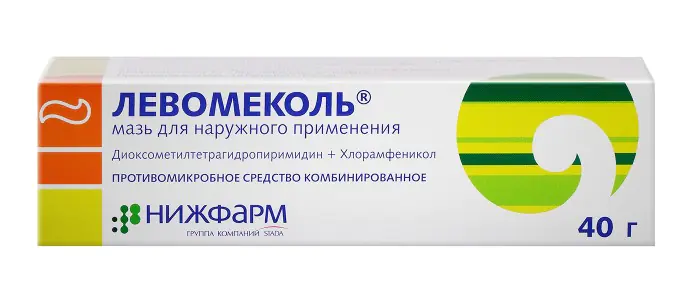
To quickly get rid of hematomas, you can use Sinyak-OFF ointment.
In case of severe pain, according to individual indications, the doctor may additionally prescribe analgesics.
The final result will be noticeable in a few weeks, when the swelling subsides and the recovery period ends.
Blepharoplasty of the eyelids allows you to change the shape of the eyes, remove sagging eyelids and raise the corners, get rid of bags, excessive swelling, solve the problem of asymmetry and congenital defects.
The operation solves aesthetic and pathological problems. However, a lot depends on the qualifications and experience of the specialist, so when deciding to have an operation, you need to carefully choose a doctor and clinic in order to protect yourself from possible negative consequences.
After a successful procedure, the skin will become elastic and look younger, and the face will become attractive.
Useful videos on the topic:
How is eyelid blepharoplasty performed? Watch in the video clip:
Results of eyelid surgery: before and after photos, watch the video:
Many women know firsthand that age can be determined first of all by the condition of the eyes and eyelids, because they are the ones who lose their youth and freshness before other facial areas. The solution to this problem was blepharoplasty, an operation that involves lifting the eyelids. The article will discuss what care the skin requires after this operation. The recommendations collected in it will allow you to achieve the desired result, which will not make you regret your decision.
Blepharoplasty: indications and contraindications
Although every woman wants to look attractive, not every woman needs blepharoplasty to achieve her goal. The list of indications for this procedure is quite exhaustive: obvious bags under the eyes, the appearance of excess skin in the eyelid area. Directly on the lower eyelid you can find a layer of fat, which over time begins to clearly bulge - this is another nuisance that can be eliminated through surgery. The appearance of wrinkles on the face is an inevitable process, the result of cell aging. And if small wrinkles sometimes give a woman a certain playfulness, then deep wrinkles on the lower or upper eyelid are their complete opposite. If you are embarrassed by deep wrinkles, if they prevent you from feeling attractive, you can also consider blepharoplasty as a solution to this problem. In addition to the above, indications for eyelid lift surgery are: drooping of the lower corner of the eye, sagging skin and even a tired look.
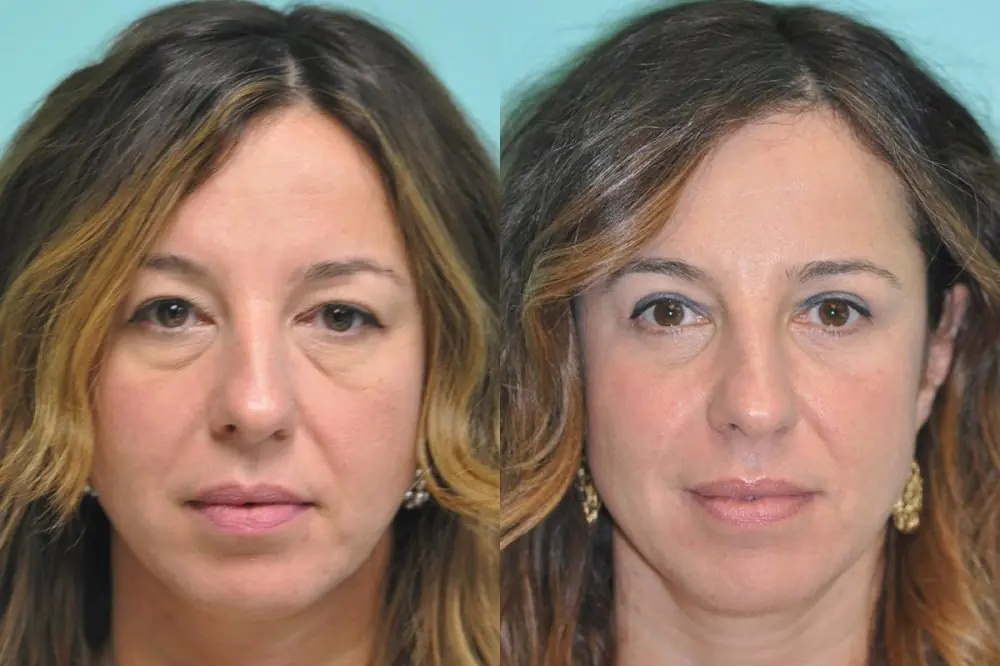
Of course, we should not forget that any surgical intervention is a huge stress for the human body, as a result of which a number of contraindications for the blepharoplasty procedure have been established: chronic diseases of the liver, cardiovascular system; oncological diseases; diabetes mellitus, as well as problems with the thyroid gland, blood pressure and intraocular pressure. It should be remembered that the postoperative period after surgery can be unpredictable, especially for people whose body is weakened for one reason or another. In this regard, the operation is completely excluded for people who have recently had a heart attack, as well as for patients suffering from diseases such as AIDS or hepatitis. In addition, blepharoplasty is contraindicated for people under 18 years of age, women during pregnancy, during breastfeeding, and also during menstruation.
Infectious or acute respiratory diseases can cause complications both during the surgical and postoperative periods, for this reason they must be completely cured before the scheduled procedure. If a person has chronic diseases, it is necessary to consult not only with the specialist responsible for the operation, but also permission to perform it from the specialist doctor under whose supervision you are required.
Rehabilitation period after blepharoplasty
Immediately after the operation, the area that was manipulated is extremely weakened, which indicates its sensitivity to the environment. For several days, the maximum risk of various microbes entering wounds that have not yet completely healed remains. Doctors recommend avoiding cosmetic procedures and even washing your face in order to prevent infection and also eliminate the possibility of increased swelling. If no complications have arisen after 72 hours, washing can be returned to the list of daily procedures, but it is necessary to avoid getting water directly into the eyes.
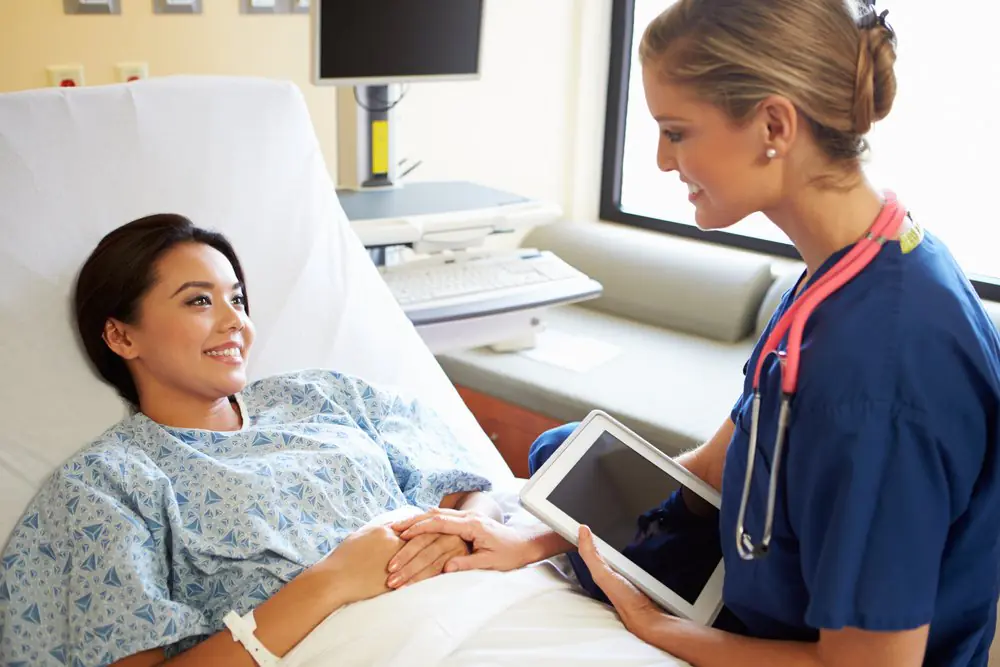
Each operation inevitably implies a certain period of recovery of the body; in the case of blepharoplasty, its duration is about 14 days. You can speed up this process yourself - to do this you need to strictly follow your doctor’s recommendations:
- say no to bad habits. Not ready to make radical changes and eliminate smoking and alcoholic beverages from your daily life? Give them up at least for the duration of rehabilitation.
- peace - emotional and, of course, physical; refusal of exhausting loads and sports, and during the first and second days - complete bed rest. Even rapid head movements are contraindicated; Downward bends can easily cause an increase in eye pressure, which has detrimental consequences after blepharoplasty. A universal solution is to ask family or friends to help with household chores. All kinds of stress and psychological tension become enemy number one. Books are temporarily sent back to the shelf, and are replaced by listening to audiobooks or music.
- To protect your eyes from infection, you will have to forget your favorite water procedures for a while - hot baths and trips to the sauna. Only a short warm shower will be appropriate.
- since we are talking about eye surgery, they become extremely vulnerable and susceptible; glasses with protection from ultraviolet radiation will be indispensable in this situation (just refrain from the desire to buy cheap glasses from unknown manufacturers, no matter how attractive they are - they can easily cause a severe burn to the retina!), and giving up TV and computer will give your eyes a much-needed two-week break. You should not use lenses for two weeks.
Any self-medication during the recovery period is completely excluded. Accurate adherence to your doctor's instructions is your duty and responsibility. Even the use of medicinal ointment or cream (which is allowed already on the first day) requires prior approval by a doctor.

The last, but no less important recommendation is extremely simple - introducing a healthy lifestyle. Everyone has heard of it, but they are not yet fully aware of what this phrase actually means. The rehabilitation period after blepharoplasty creates excellent preconditions for joining the cult of health:
- A healthy lifestyle cannot be imagined without sound, healthy sleep, and during the recovery period, the use of high pillows is encouraged, which helps relieve swelling. And, of course, proper nutrition, which eliminates the possibility of disruption of the full functioning of the gastrointestinal tract.
- Among the unpleasant consequences of surgical intervention is swelling of the eyes, which is provoked by a water-salt imbalance. To avoid this problem, it is enough to avoid eating too salty, spicy or fatty foods during the recovery period. Along with avoiding certain foods, you should also exclude coffee from your daily diet. It is also worth switching your diet to consuming broths prepared with lean meats (for example, veal). Such food helps maintain strength and is also easily absorbed by the human body.
- For a speedy recovery, it is more important than ever to adhere to a daily routine and an established sleep schedule - its duration should be the classic eight hours, and it is better to go to bed before midnight.
It takes a little more than a week for the sutures to be removed (with a successful healing process), and even less time is required if the operation was performed on the upper eyelids. As for the complete elimination of swelling, as well as redness of the eyes, this will take from one to one and a half months, and in individual cases - even more time. And after this period, it will be possible to truly evaluate the visible changes.
When starting further preventive measures, we must not forget that:
- After about 7 days, it is permissible to start using face masks, while excluding their application to the area of sutures and eyes. At the same time, it is reasonable to include a “massage” item in the skin restoration plan, but entrust it to specialists in this field.
- decorative cosmetics often provoke irritation of the eyelids, so applying makeup is canceled for at least two weeks; you will have to forget about scrubs and cleansing lotions (no matter how natural the composition) for at least a month (or even longer) - the return to their use is directly dependent on the speed of healing.
- complex cosmetic procedures (lifting, dysport, etc.), due to their aggressive effects, should not be undertaken before at least two months have passed since blepharoplasty
Features of care after blepharoplasty
The speed of recovery after surgery directly depends on the quality and regularity of care for the area that has undergone plastic surgery. This is also a complex of versatile measures affecting the skin (including postoperative sutures) and eyes. Let's look at this in more detail:
1) Seams.
- During the first few days, it is mandatory to wear a sterile bandage that will protect the stitches from infection.
- The attending physician prescribes the use of antiseptics, as well as creams and ointments, the use of which helps to quickly tighten the sutures. The widely used ointment Levomekol successfully helps protect against suppuration, and Lyoton is recommended to be applied to the lower eyelids for one week.
- redness on the skin that remains after the doctor removes the stitches completely disappears thanks to the use of absorbable gel
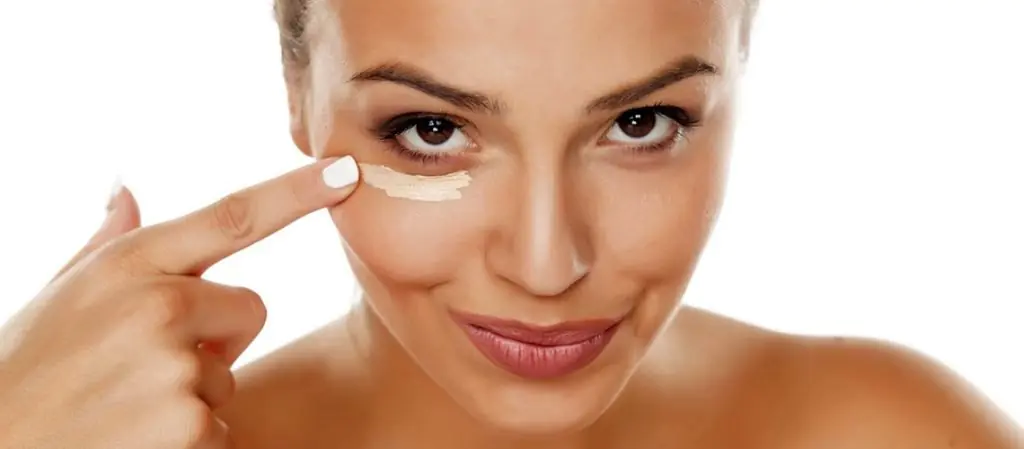
2) Eyes.
- in the first time after the operation, they are in an inflamed state, swelling appears - this is why wearing lenses that create additional irritation and pressure is excluded
- To get rid of inflammation and dryness, the attending physician should prescribe special drops.
3) Lower and upper eyelids.
Eyelid skin care provides three important functions:
- protection against germs (using a special patch during the first 72 hours)
- Relieving swelling (cold compresses are indispensable for quickly relieving swelling)
- stimulation of the healing process (attending doctors often recommend using a cream based on Chinese mushroom extract; it needs to be applied 2 times a day, and the course of treatment is two weeks. At the same time, it should be borne in mind that it is unacceptable to prescribe this remedy yourself!)
A useful addition to the medical prescriptions of the attending physician (mainly in the case of severe swelling of the eyelids) will be the inclusion of a set of therapeutic exercises in the postoperative care measures: they stabilize blood circulation in the area that has undergone surgery, help eliminate inflammation, and get rid of swelling.
A good method is the acupressure technique. It is quite simple: you need to start with gentle circular movements in the eyelid area, which are made with the index and middle fingers of the hand (clockwise). Descending to the lower eyelid, we apply gentle and gentle point pressure on its edge, then slowly move further to the inner corner of the eye. Having applied the same delicate pressure at this point, we move to the center of the eyelids, and then repeat circular movements with our fingers under the eyebrow and along the edge of the eyelid.
Photos before and after blepharoplasty:
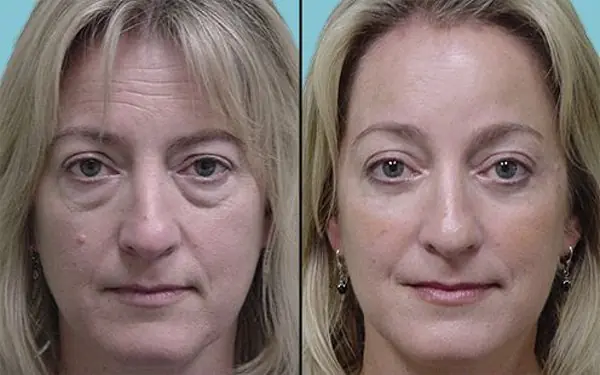
Blepharoplasty in Moscow by the best plastic surgeons at the Celine clinic: video
Plastic surgeon, full member of the Russian Society of Plastic Reconstructive and Aesthetic Surgeons (ROPREX).
Areas of professional interests: blepharoplasty of the upper and lower eyelids, plastic surgery of the red border of the lips, plastic surgery of the auricles for protruding ears, mechanical skin resurfacing, mammoplasty, rhinoplasty, excision of scars with the application of a cosmetic suture, removal of tumors of the skin and face and other parts of the body, abdominoplasty, liposuction, hymenoplasty, facial contouring, botulinum therapy, minimally invasive lifting with APTOS threads. Regular participant in international forums, symposiums and conferences.



